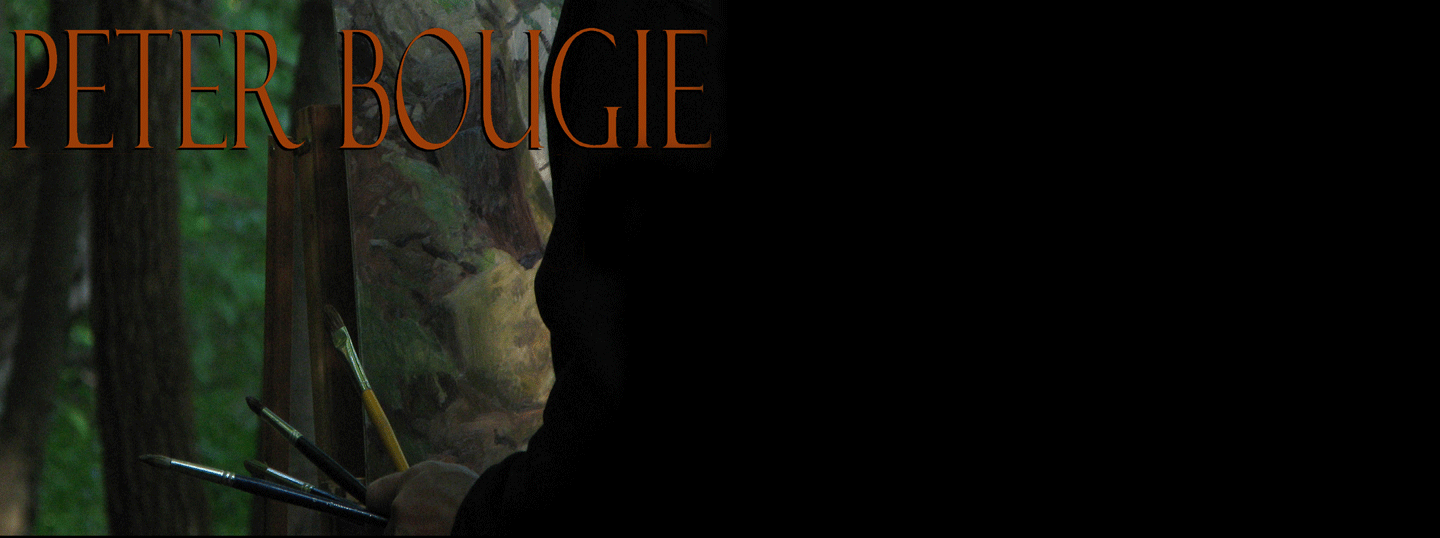 |
| Queen Anne's Lace oil on canvas 24 x 32 1992 Peter J. Bougie |
In 1992 I completed the painting
Queen Anne’s Lace, named for the white wildflower shown growing
prolifically in the foreground (see image). That flower did and still brings
with it associations recalled from many late summer seasons. In this part of
the country it first appears in July and continues to be seen in numbers well
into August with stragglers still coming along in September. Summer is passing
its peak; the frenzy of growth is slowing, things are maturing and going to
seed, and the season is moving along on momentum generated in May and June, as
it were. The daylight is already waning, and by August you begin to notice it.
It’s a time of the year tinged with the feeling of things passing away, things
that were longed for throughout the winter and spring; now they have either
come to pass, or the opportunities have passed by.
It was a milestone painting for me. I had been striving to
paint long views of the wide Mississippi valley just upstream from LaCrosse,
Wisconsin, from the Minnesota side of the river, for several years. I had some
success a couple of times prior to this painting but Queen Anne’s Lace was the most successful. Viewing a reproduction
after 21 years I am still reasonably pleased to have done it, and there are so
many things I can’t say that about. I found reasonable solutions to numerous fundamental
problems associated with painting this kind of landscape that I had struggled
with for a long time; spatial and atmospheric perspective across a long,
expansive view, the contrast and variety of value and color intensity between
foreground and background, and composing within the picture plane based on
selecting from what nature provides in the way of natural patterns of light and
shadow, to name three. And I hope it expresses some of the joyous, extravagant
splendor of creation, and of the ordering activities of created human creatures on the landscape, evident in the agricultural fields of the middle
and far distances.
On one of my trips to this site to execute the painting I
took my stepson John along. I was hoping to both spend time at large in this
beautiful country with him, and accomplish some painting as well. I was very
preoccupied and anxious with making a name for myself as an artist;
consequently I gave the painting better attention than I gave him. It is a
regret I have looking back at that time; a holy opportunity that passed by. We
tell ourselves there will be another chance, and sometimes there is; but even
in telling ourselves there will be another chance, we acknowledge that we are passing over the one at hand. If we receive grace now, let us not neglect it. “At
the acceptable time I listened to you, and on the day of salvation I helped
you. Behold, now is ‘the acceptable time’; behold, now is ‘the day of
salvation.’” (Corinthians 2, 6:2). I asked for and was given much grace to
complete this painting, and I asked for grace with my stepson too, in that I
hoped for it. When it appeared, I did not respect it, preferring grace in the
artistic form.
The painting was photographed and went to the
Vern Carver Gallery (not yet Carver/Beard, as it is now) in Minneapolis. Within
a few weeks it was sold to a corporation which was itself later sold. I tried to discover what had become of the
painting in the early 2000’s in order to borrow it for a Classical Realist
exhibition at Hastings on Hudson in New York, but could not locate it. So it
has passed, like those days, not only out of my hands but entirely beyond my
reach.


